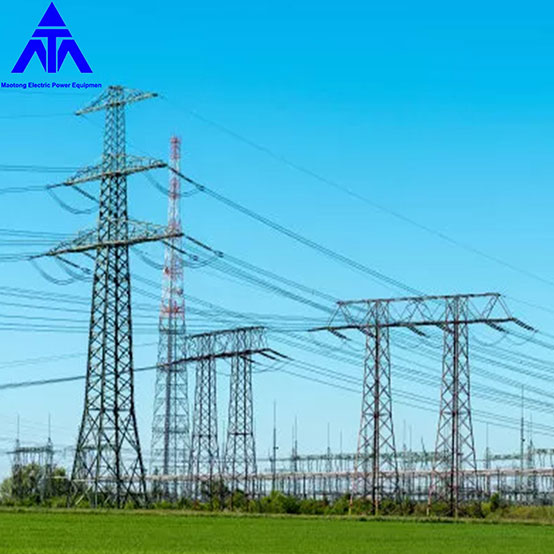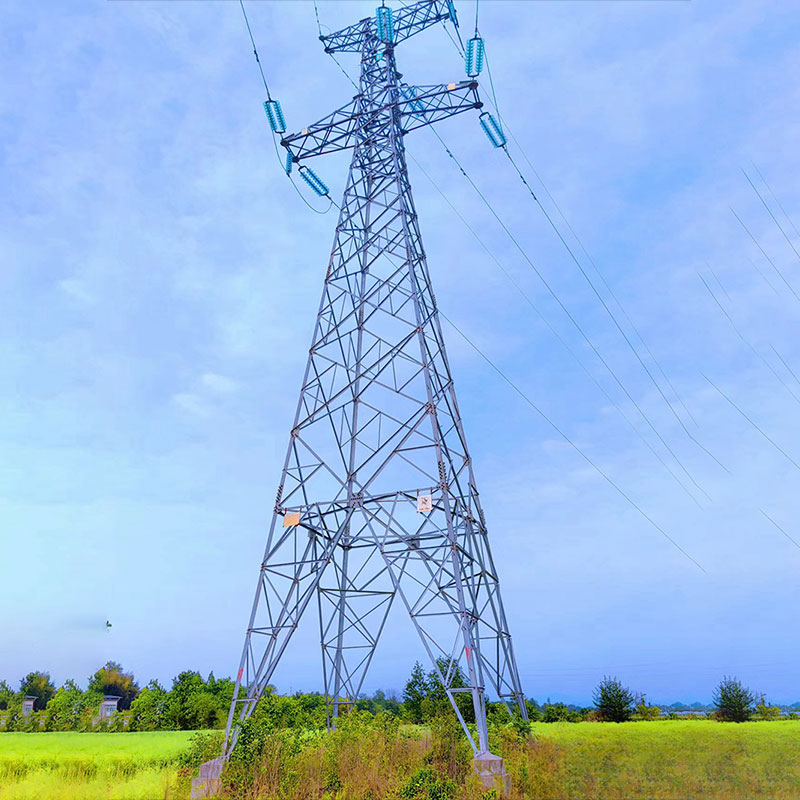- English
- Español
- Português
- русский
- Français
- 日本語
- Deutsch
- tiếng Việt
- Italiano
- Nederlands
- ภาษาไทย
- Polski
- 한국어
- Svenska
- magyar
- Malay
- বাংলা ভাষার
- Dansk
- Suomi
- हिन्दी
- Pilipino
- Türkçe
- Gaeilge
- العربية
- Indonesia
- Norsk
- تمل
- český
- ελληνικά
- український
- Javanese
- فارسی
- தமிழ்
- తెలుగు
- नेपाली
- Burmese
- български
- ລາວ
- Latine
- Қазақша
- Euskal
- Azərbaycan
- Slovenský jazyk
- Македонски
- Lietuvos
- Eesti Keel
- Română
- Slovenski
- मराठी
- Srpski језик
How can Angle steel towers remain stable in extreme climates?
2025-06-27
In recent years, with the intensification of global climate change and the frequent occurrence of extreme weather events (such as strong wind load, ice cover load, and low-temperature brittleness), as the core supporting structure of power transmission lines and communication networks, the safe operation of Angle steel towers under extreme weather conditions such as typhoons, heavy rain, ice and snow, and low temperatures is directly related to regional power supply security and smooth communication. However, Qingdao Maotong Electric Power Equipment Co,Ltd. Through multi-dimensional technological breakthroughs such as material innovation, structural optimization, and intelligent monitoring, a systematic solution has been provided for the extreme climate adaptability of Angle steel towers. In the future, with the further development of numerical simulation, 3D printing and artificial intelligence technologies, the extreme climate adaptability of Angle steel towers will reach a higher level.
The application of high-strength weathering steel and composite materials
Traditional Angle steel towers mostly use Q235 or Q345 steel, but they have problems such as insufficient strength and poor corrosion resistance in extreme climates. At this point, high-strength weathering steel (such as Q355B grade weathering steel) is needed. By adding trace elements like niobium and titanium, it can maintain an impact energy of over 27 joules at a low temperature of -40℃. It has been successfully applied in extreme climate projects such as Hokkaido. Carbon fiber composite materials (CFRP) can also be used for tower body reinforcement, which can increase the bending stiffness by 15% to 20%, reduce the weight by 10% to 15% at the same time, and significantly reduce the impact of wind load. Qingdao Maotong Electric Power Equipment Co,Ltd. Develop nano-scale anti-icing coatings to reduce the adhesion of ice layers by 60% and decrease the frequency of de-icing operations by more than 50%.
Conduct structural optimization throughout the entire cycle from design to construction
Dynamic stability design: Through finite element analysis (FEA), simulate the forces on the tower body under different wind speeds and icing conditions, and optimize the cross-sectional shape and height-to-diameter ratio of the tower body. For instance, the conical tower design can reduce the wind resistance coefficient by 15% to 20%. The lattice tower body disperses the wind pressure through the truss structure, enhancing the overall stability.
Dynamic stability design: Through finite element analysis (FEA), simulate the forces on the tower body under different wind speeds and icing conditions, and optimize the cross-sectional shape and height-to-diameter ratio of the tower body. For instance, the conical tower design can reduce the wind resistance coefficient by 15% to 20%. The lattice tower body disperses the wind pressure through the truss structure, enhancing the overall stability.
Intelligent Tuned Mass Damper (TMD) : A TMD device is installed at the top of the tower. By adjusting the vibration frequency of the mass block in real time, wind-induced vibration is suppressed. It has been measured that the displacement at the top of the tower can be reduced to within 85% of the safety threshold.

Intelligent monitoring and early warning
The fiber Bragg grating sensor network monitors the strain, tilt Angle and vibration frequency of the tower legs in real time at a sampling frequency of 200 Hertz. Combined with digital twin technology, millisecond-level data assimilation is achieved, increasing the stress prediction accuracy of the members to 92%.
The multi-disaster coupling early warning system can integrate meteorological data, structural responses and material properties to construct a multi-parameter coupling model of wind, ice and temperature. For example, the combined probability distribution of wind speed and ice cover in the next 24 hours is predicted through the LSTM neural network, and the error rate is controlled within 8%.
The unmanned aerial vehicle (UAV) cluster inspection adopts a multi-agent reinforcement learning algorithm to command 30 UAVs to complete the all-round inspection of a single base tower under wind conditions of level 6. The defect identification accuracy rate reaches 91%, and the emergency response time is shortened to 8 minutes.

The stability of Angle steel towers under extreme climates is a deep integration of materials science, structural engineering and intelligent technology. Through innovative applications such as high-strength weathering steel, composite materials, and intelligent monitoring, Qingdao Maotong Electric Power Equipment Co,Ltd. A full-chain defense system of "prevention - monitoring - response" is gradually being constructed. As a leading enterprise in the field of Power and communication infrastructure, Qingdao Maotong Electric Power Equipment Co,Ltd. Always committed to the research and development and application of technologies adaptable to extreme climates. We offer a full-process solution from material selection, structural design to intelligent monitoring to help customers build a safe and reliable Angle steel tower system. Welcome to call +86-18561734886 for consultation or visit the official website for more information.



